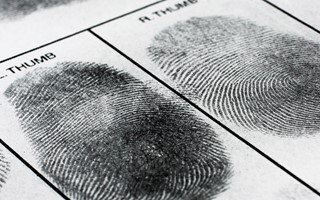News July 29, 2025
This case study is drawn from a recent webinar delivered by Chris Goddard, Forensic Collision Consultant at Forensic Access, which explored how careful forensic analysis can help uncover the truth and shape the outcome of even the most serious criminal cases.
Forensic collision investigation is a highly specialised discipline that applies scientific principles to the reconstruction of road traffic incidents. A collision investigator uses mathematics, physics and engineering to establish, as accurately as possible, how and why a collision occurred. This involves careful analysis of vehicle movements, braking patterns, road conditions and the surrounding environment to create an objective reconstruction of the events.
By interpreting the physical evidence left behind after a crash, the investigator can provide the court with a clear, impartial and scientifically supported explanation of the events that took place. This expert insight helps courts move beyond speculation and ensures that decisions are grounded in factual evidence.
Introduction to the Case:
Forensic Access was instructed to provide an expert collision investigator to uncover the facts. Chris Goddard was the expert called to apply forensic expertise to a fatal road traffic collision involving a car and two motorcycles. The driver of the car was facing prosecution for murder following an incident where his vehicle struck two motorcycles at speed.
The defence legal team required an expert to review the prosecution evidence, ensure that the technical facts of the case were fully understood, and help the jury reach a conclusion on whether the collision was a deliberate act or an unfortunate accident.
Background:
The incident took place at night on a 30mph road, where a car was following two motorcyclists as they travelled towards a junction. As the motorcyclists slowed to prepare for a right turn, the car collided with the rear of both motorcycles. The prosecution alleged that the driver had deliberately caused the collision, and the case was brought to court as a charge of murder.
The scene was partially captured on CCTV, which became a central piece of evidence. However, initial police analysis had not accounted for all the available data or the complexities of human response in high-pressure driving situations.
The Challenge:
At the heart of this case was a critical and complex question: was the collision a deliberate act of violence or the tragic result of a high-speed misjudgement? Expert input was vital because the collision investigation needed to:
- Establish the precise speeds of all vehicles involved.
Understanding whether the vehicles were exceeding the speed limit, and by how much, was crucial to assessing how rapidly the situation unfolded and whether the driver had a realistic chance to avoid the collision. Accurate speed analysis could also provide insight into the severity of the impact and the likely responses of those involved.
- Accurately reconstruct the sequence of events.
With several vehicles involved, it was necessary to build a clear timeline of movements. This would identify when the motorcyclists began slowing down, when the car started braking, and the precise moment when the collision occurred.
- Interpret and analyse the available CCTV footage.
A further complication emerged when the police footage provided had been unintentionally slowed by a factor of two, causing it to play back at half speed. Without careful forensic analysis, this could create a misleading impression of how quickly or slowly events unfolded, potentially influencing perceptions of intent.
- Forensically examine the CCTV footage to extract accurate timing and movement data.
Instead of visual interpretation alone, the investigation would require the precise measurement of distances, reference points, and timings within the footage to build a scientifically supported account of events. This approach could remove uncertainty and ensured conclusions were based on verifiable facts.
- Apply recognised scientific methods to assess the driver's perception and response times.
Establishing how quickly a typical driver could perceive a hazard, assess the situation, and physically respond could be key to understand whether the driver had any realistic opportunity to prevent the collision.
Together, these challenges demonstrated the need for expert analysis, based on sound scientific principles, to fully understand the case.
The Findings:
A detailed collision investigation was conducted, using advanced forensic techniques to reconstruct the incident. The work included:
- Corrected CCTV analysis provided accurate timing and movement data.
By recalibrating the slowed footage, the team established an objective and reliable timeline of the vehicles' positions and movements.
- A detailed 3D digital reconstruction brought clarity to the scene.
This digital reconstruction was created using over 600 photographs taken from both aerial drone imagery and ground-level perspectives. The model provided a highly accurate visual representation of the road layout, junction, and surrounding environment and key features.

Image: 3D digital model, created with over 600 photographs from the scene.
This precise mapping allowed both legal teams and the jury to clearly visualise the incident, including vehicle positions and movements, all of which were crucial to understanding how the collision occurred.
- Vehicle speeds were calculated using fixed reference points.
The investigation involved calculating vehicle speeds by tracking movement across fixed reference points visible in the CCTV footage. Landmarks such as bus stop markings, and road features served as reliable measurement markers.
By recording the exact time each vehicle passed these points, the expert was able to accurately assess the speed of each vehicle at critical moments. This analysis confirmed how fast each vehicle was travelling and demonstrated how quickly the situation developed in the moments before the collision, including whether the driver had time to react.

Image: Using the bus stop as a fixed point to measure the speed of the travelling vehicles.
- Brake light illumination indicated the driver was attempting to stop.
A key moment captured on the footage was the illumination of the car’s brake lights prior to the collision. This detail provided strong evidence that the driver was taking action to avoid the crash, rather than acting with any intent to cause harm.
The illumination of brake lights was a measurable event that directly challenged the prosecution’s case, undermining any suggestion of deliberate intent.
- Perception-response time research supported the defence case.
The investigation also examined the driver's likely thought process by incorporating research based on perception and response times and applying it to the circumstances of the case. These established scientific models determined that the driver would have started to perceive and respond to the hazard approximately 80 metres before the impact.
This behaviour was consistent with a reasonable human response to a sudden hazard and provided further support to the conclusion that the collision was not deliberate but instead the tragic outcome of a fast-developing situation.

Image: This illustrates the reaction and breaking points, key for challenging the assumption of ‘intent.’
Together, these findings demonstrated that the collision was consistent with an unintended outcome arising from excessive speed and human error, rather than a calculated or deliberate act. The forensic evidence offered the jury an alternative and scientifically grounded explanation, which helped shift the focus from speculation to facts.
Ultimately, the jury acquitted the driver of murder.
This case serves as a powerful reminder of the importance of expert input in complex legal proceedings, where technical evidence can make the difference between conviction and acquittal.
Conclusion: Work with Forensic Access
At Forensic Access, we provide expert analysis and support in collision investigation, as well as in a wide range of forensic disciplines. Our experienced specialists deliver impartial, evidence-based insight to assist courts, legal teams, and investigators in uncovering the truth.
If you need assistance with road traffic collision analysis, or any other forensic expertise, our team is here to help.
Contact our Casework Management Team via email at science@forensic-access.co.uk or by phone on 01235 774870.


